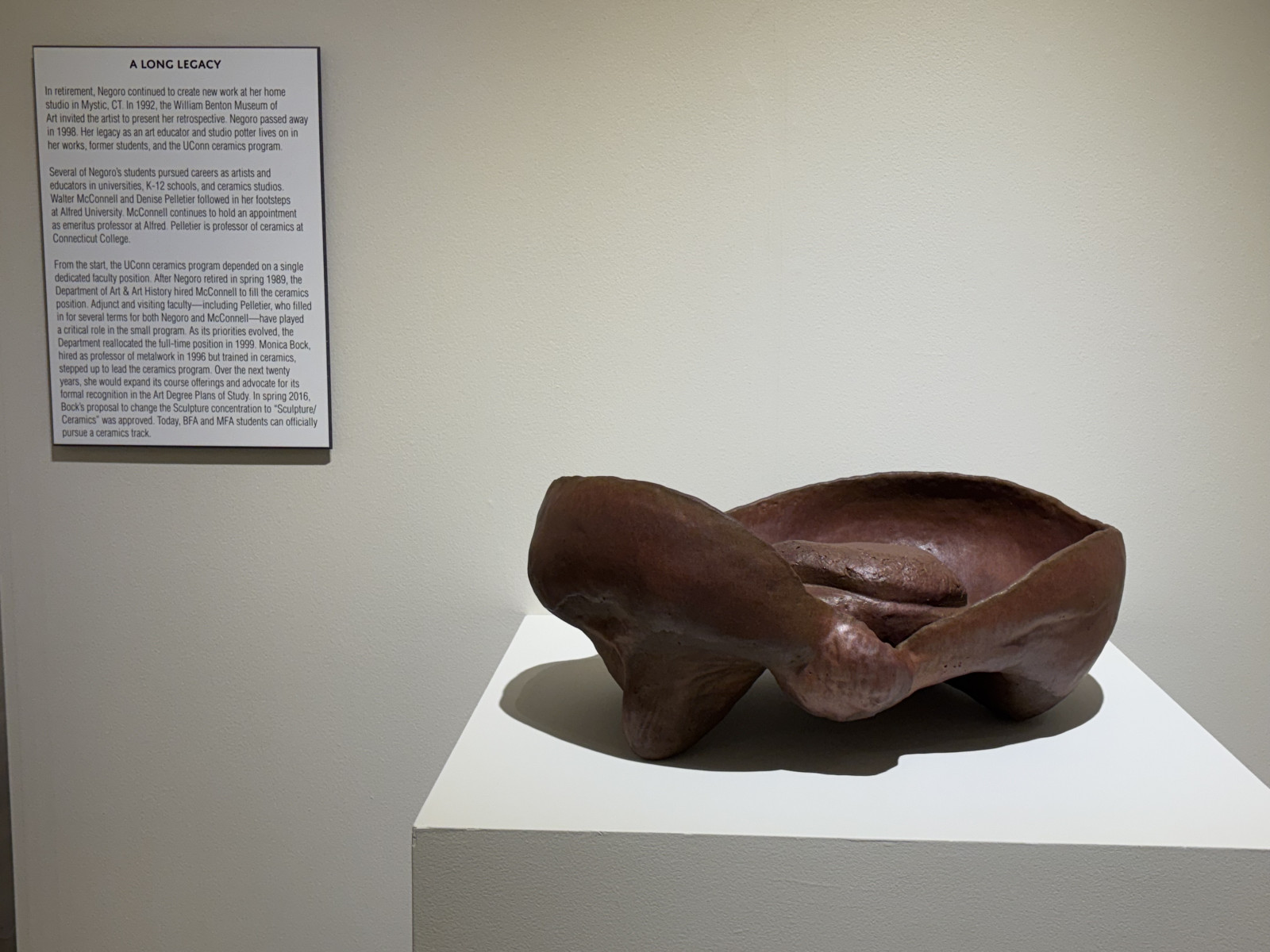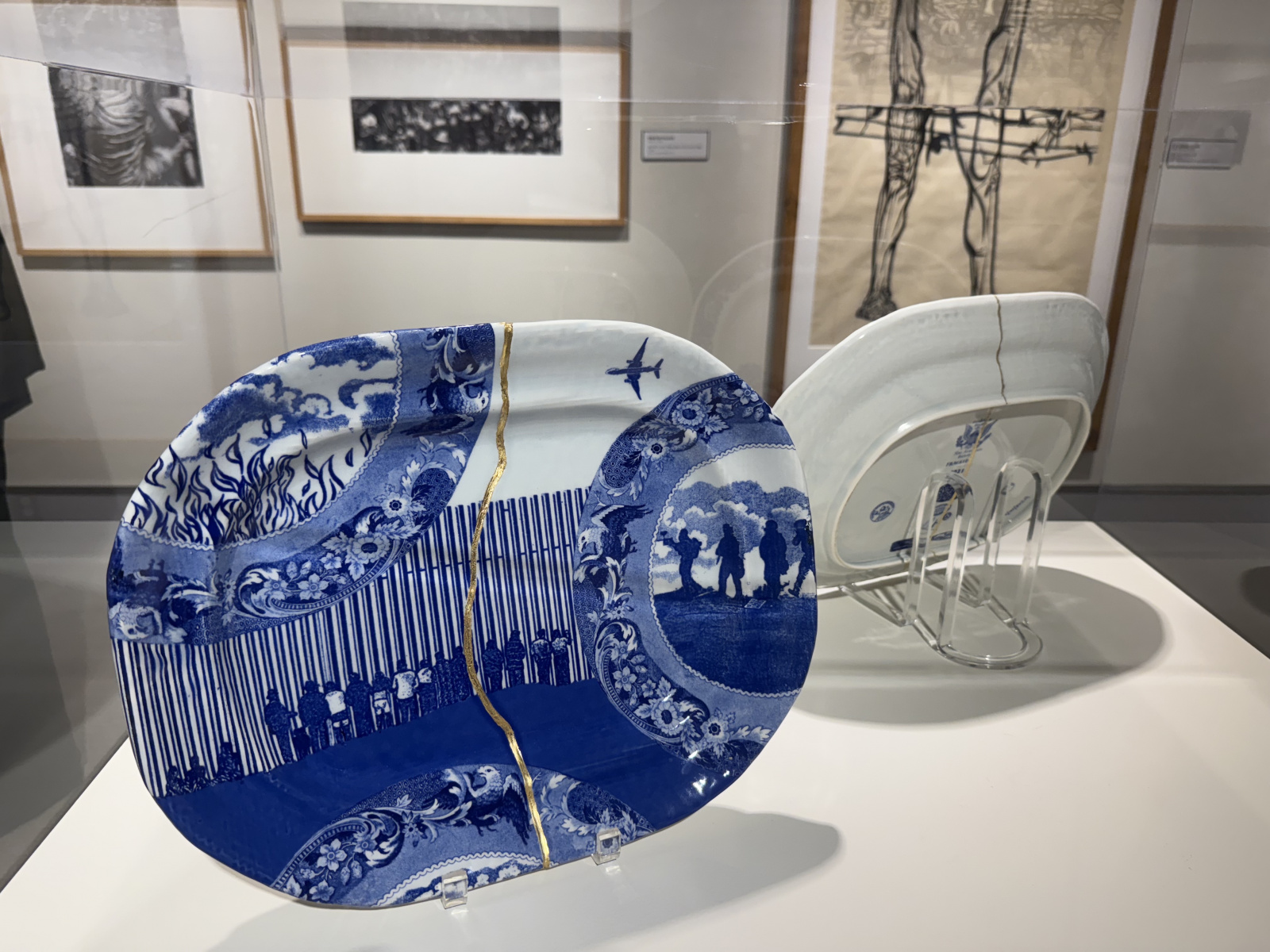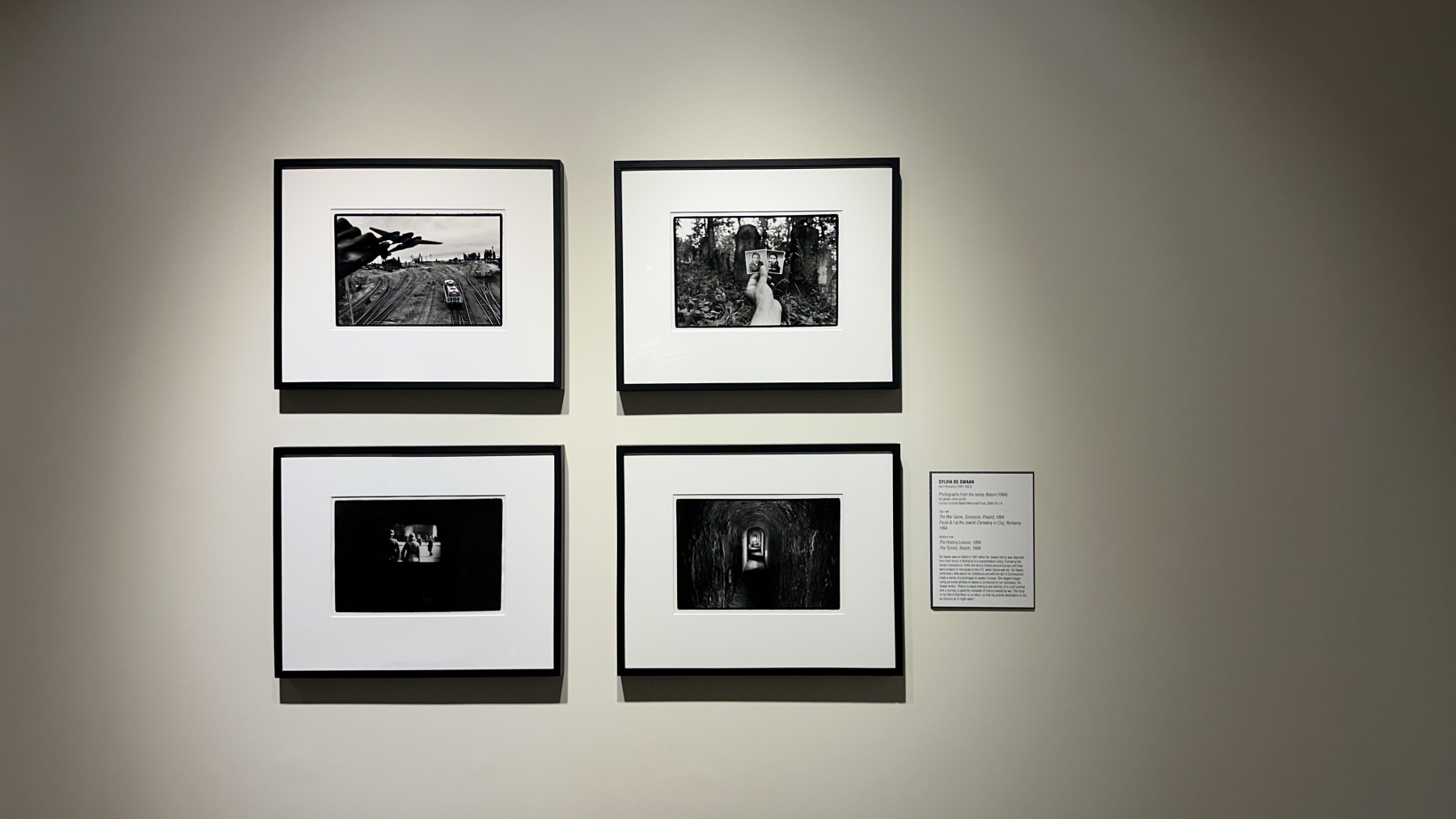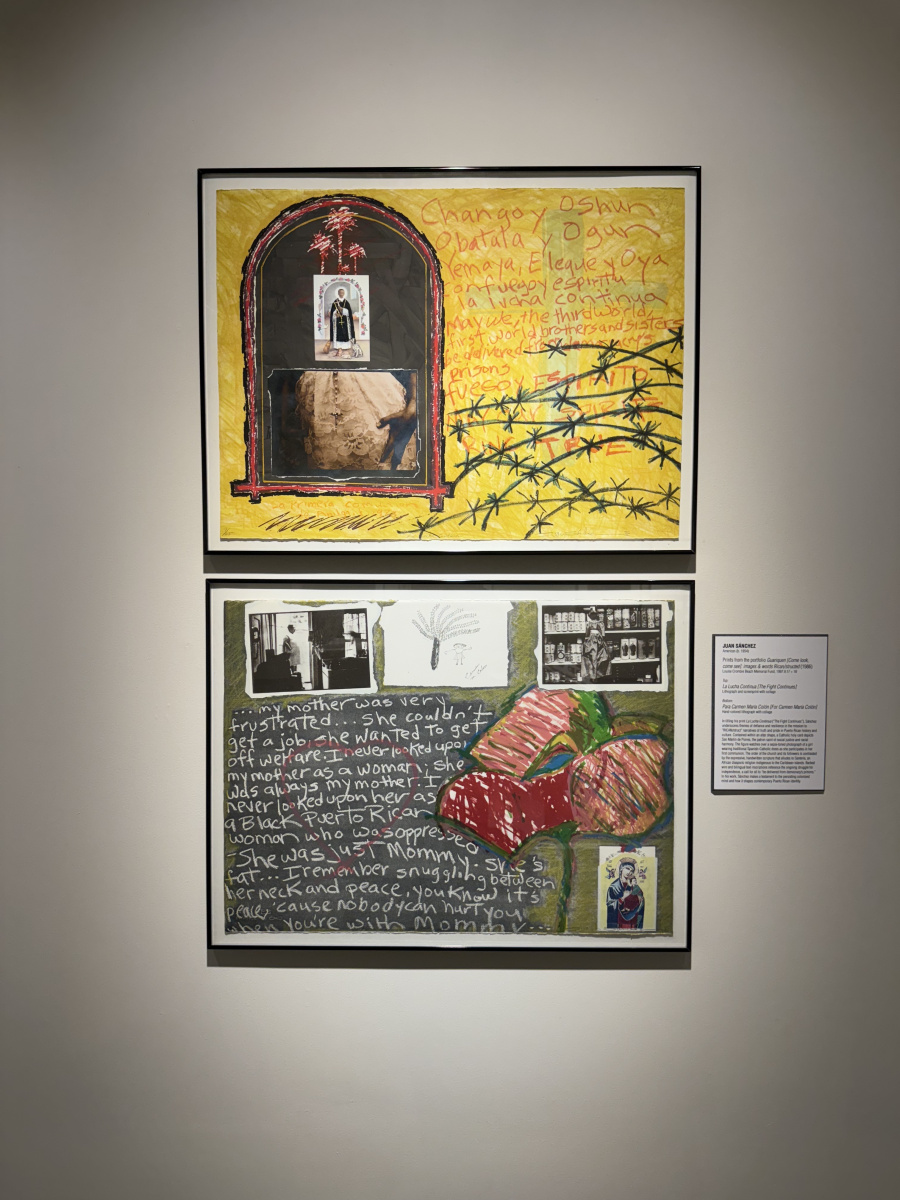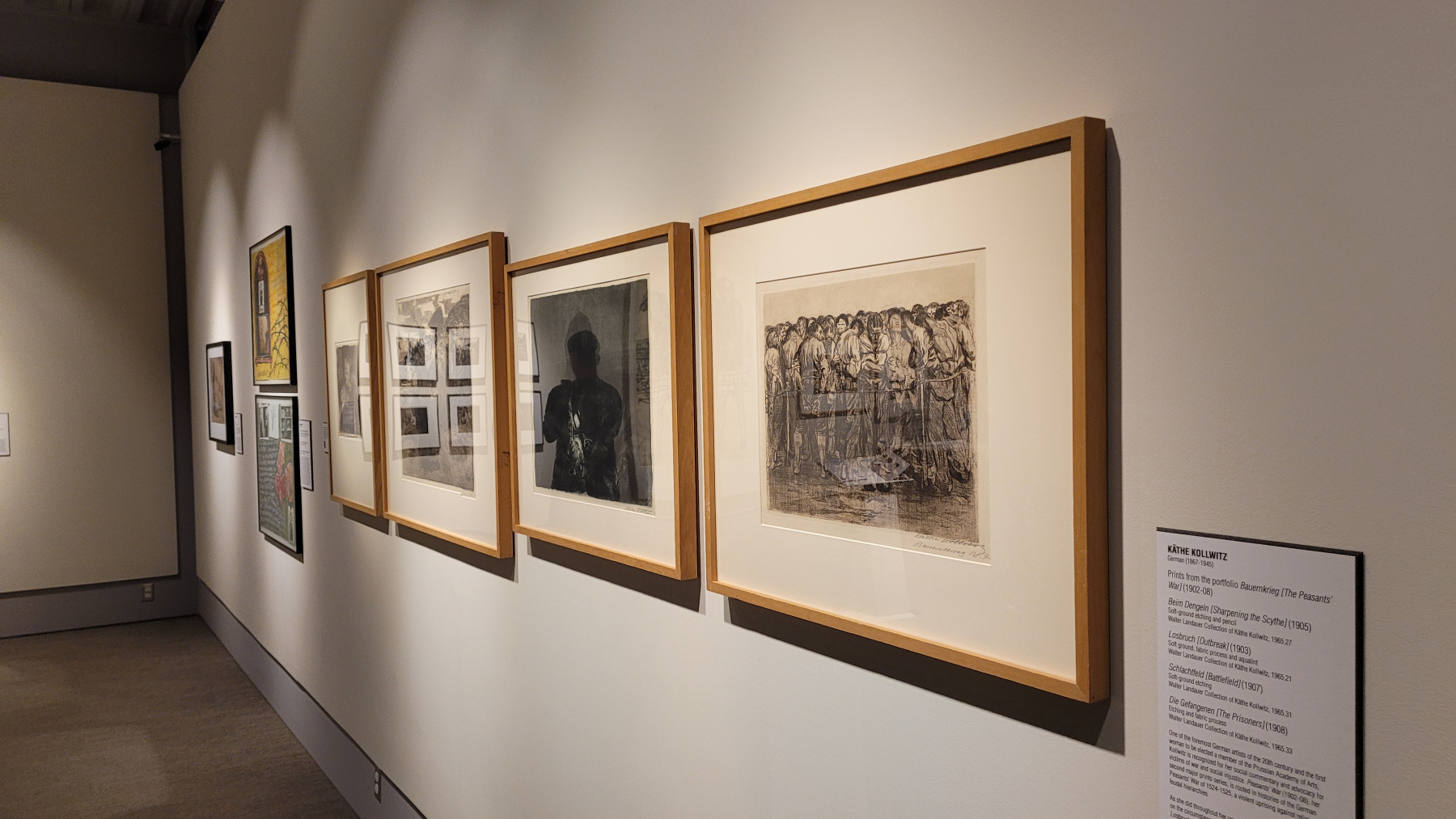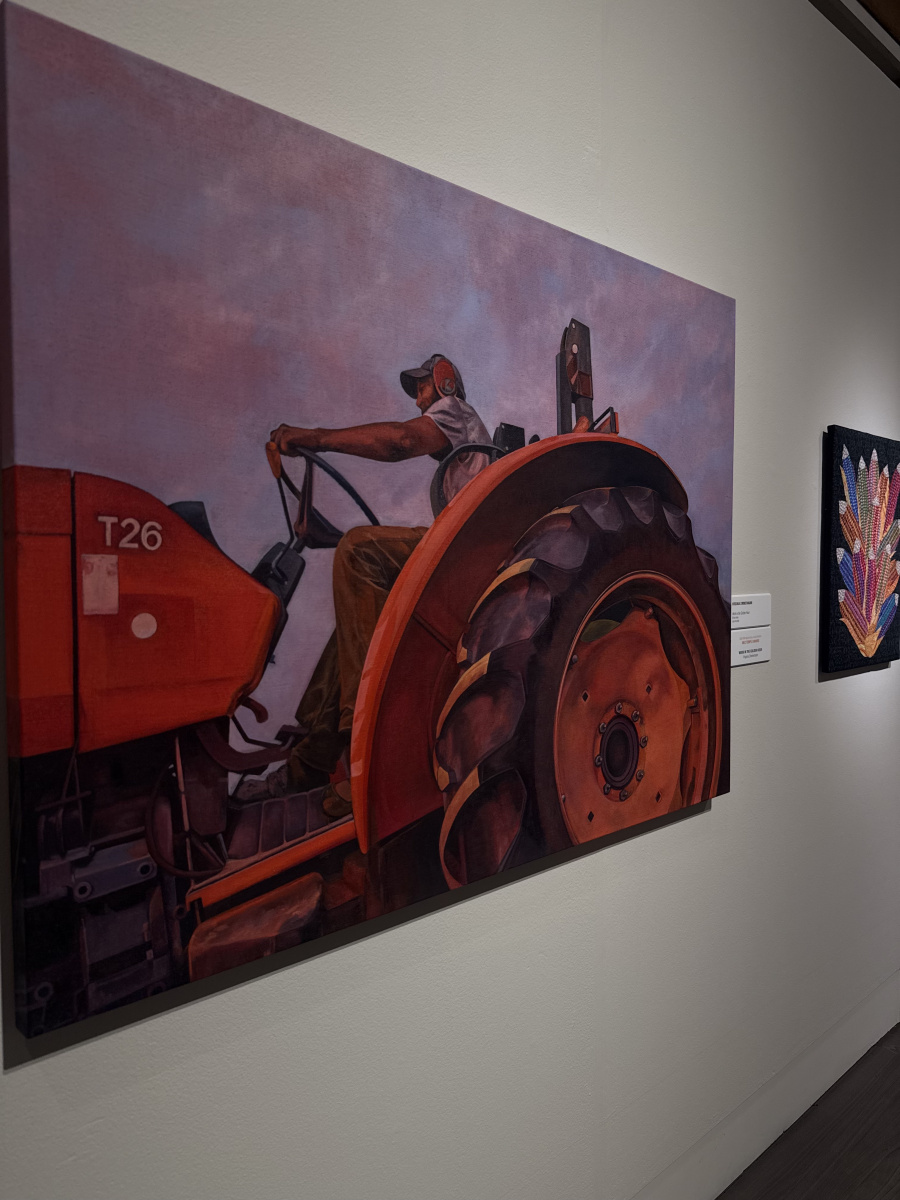Story, photos and video by the Pre-College Summer Multimedia Journalism Team: Sheila Andrade, Melanie Benalcazar, Davian Bowles, Michael Butterworth Jr., Anne Canale, Aolani Curt, Dannae Flores Cabrera, Zoe Foster, Amirah Gallimore, Sabira Hussaini, Jesse Kocher, Alyssa Levy, Alondra Luna and Olivia Stewart
July 2025
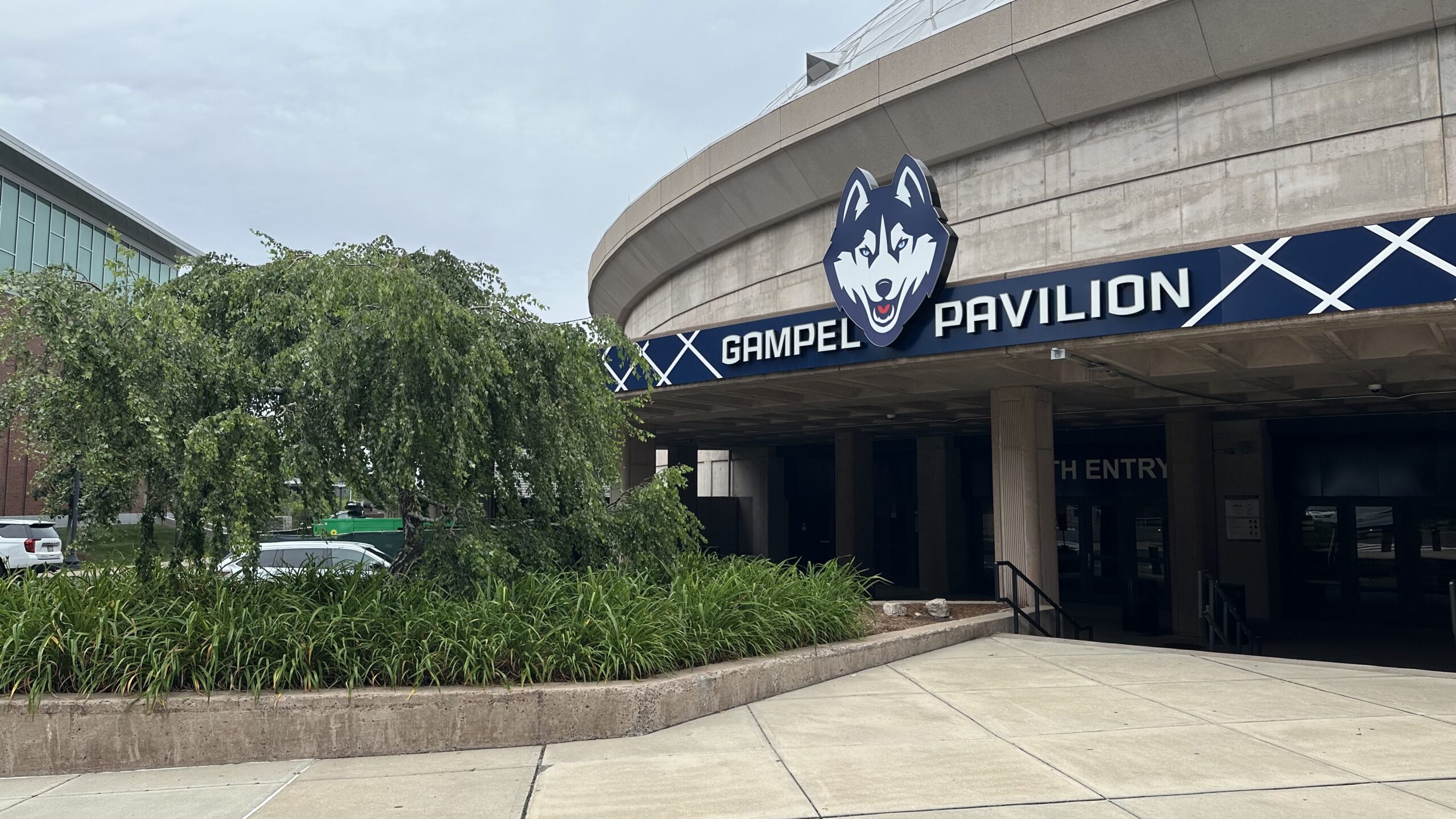 Gampel Pavilion is closed for summer tours at it undergoes renovations.
Gampel Pavilion is closed for summer tours at it undergoes renovations.
STORRS – UConn might be best known for its dairy bar ice cream on hot summer days, but there are plenty of other draws on campus.
Many area residents brave the heat to walk their dogs, visit the air-conditioned William Benton Museum of Art to soak up some culture, check out athletic facilities like the Burton Family Football Complex and Gampel Pavilion up close or buy Huskies merchandise from the UConn Bookstore.
Also during the summer months, high school students involved in the Pre-College Summer experience spend time in fan-cooled dormitories and take weeklong programs of study as they get a taste of college.
At the William Benton Museum of Art on Glenbrook Road, curator of education Matthew Marshall explains that the collection — housed at Connecticut’s state art museum — is open to all year-round and admission is free.
>
Video editing by Alondra Luna
The Benton Museum is hosting two exhibitions that illuminate perseverance in the face of adversity. “Encounters with the Collection: Art and Human Rights” and “Minnie Negoro: From Heart Mountain to UConn” highlight different aspects of the human experience, but are woven together into a cohesive theme — the intersection of art and adversity. Both of these exhibitions showcase remarkable and unforgettable pieces that challenge visitors to reflect on the human experience and the power of art.
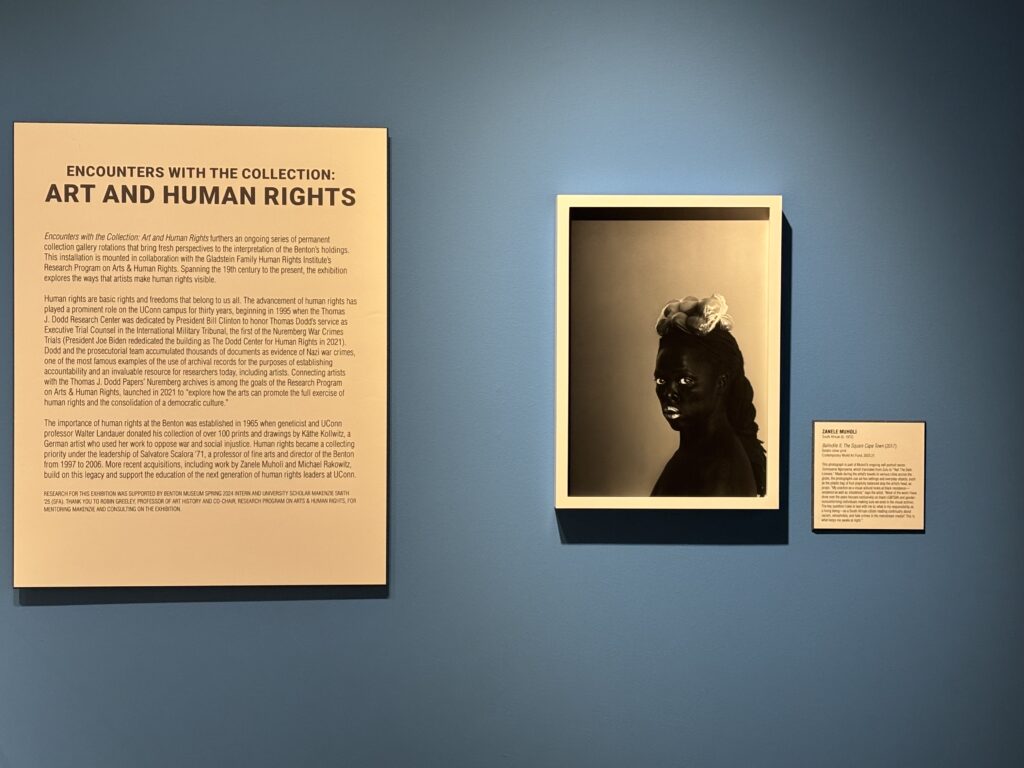
“Encounters with the Collection: Art and Human Rights” runs through July 28 and reimagines the Benton’s collection through the lens of human rights from the 1800s onward. It features diverse stories like “Ancestral Altar #9” (2005) by Binh Danh, a chlorophyll print on a nasturtium leaf, portraying a boy with the number “152” and butterfly wings against a gold-leafed plant, in memory of the Cambodian genocide.
“Dreamweavers” (1997) by Genara Banzon features a photograph of indigenous Philippine women with etched text narrating different events in Filipino history, celebrating the resilience of the women before, during and after colonialism.
Below, Marshall talks about yearly visitors:
Video editing by Alondra Luna
Marshall highlights Roger Shimomura’s “Mistaken Identities” series (2005) featured in “Encounters with the Collection” as a pivotal connection between the two exhibitions.
“It’s a great hinge piece to talk about, both exhibitions at once,” Marshall notes, referencing Shimomura’s vibrant, pop-art-inspired works that explore Japanese American identity and the impact of World War II internment. These pieces resonate with Minnie Negoro’s journey from the internment to artistic triumph.
From Heart Mountain to UConn
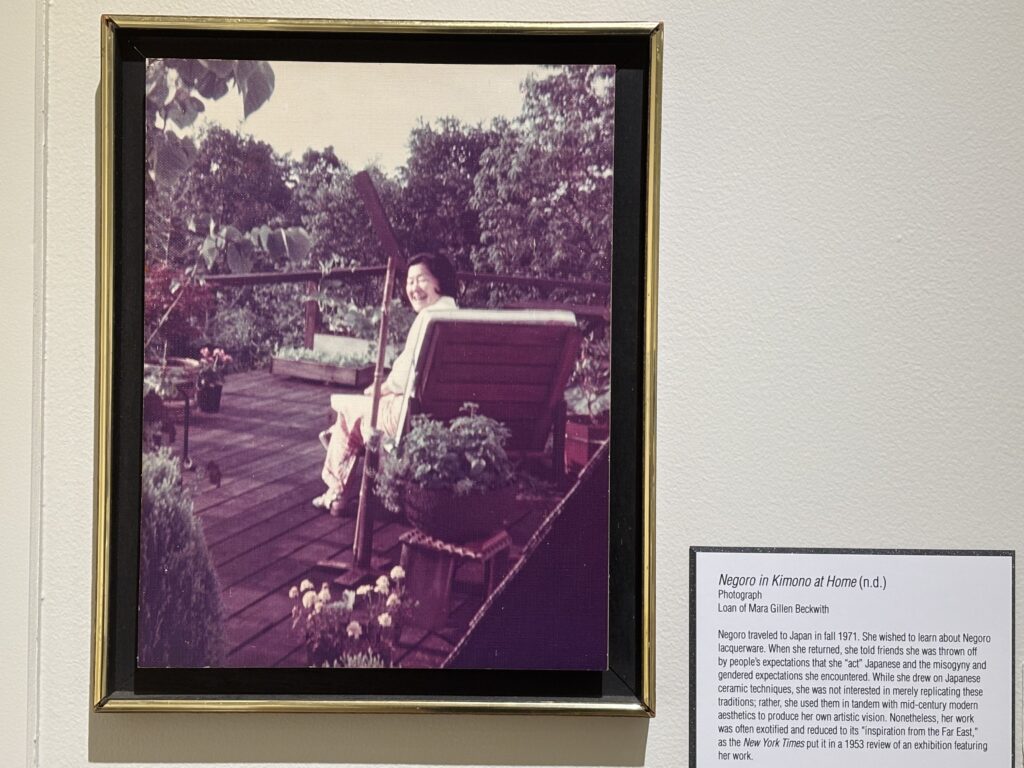
Negoro was a Japanese-American art student in her senior year of college until the spring of 1942, when she was forced into an internment camp during World War II.
Due to her background as an art major, she learned the art of pottery and was one of the six people hired at the Heart Mountain Ceramics Plant. Her training at Heart Mountain led Negoro to teach at UConn’s School of Fine Arts, where she founded its ceramics program. Her work is displayed in a variety of notable museums, including the Smithsonian.
Negoro’s exhibition at the Benton features her own work alongside pieces by her former students. Through her art, Negoro’s legacy continues to flourish at UConn, inspiring new generations of artists and reminding visitors of the strength and endurance that shaped her story.
Below is a slideshow featuring photos of works at the Benton Museum:
Noted fiber artist Ivy Strauss happened to be at the Benton as well. Here she is in front of her piece:
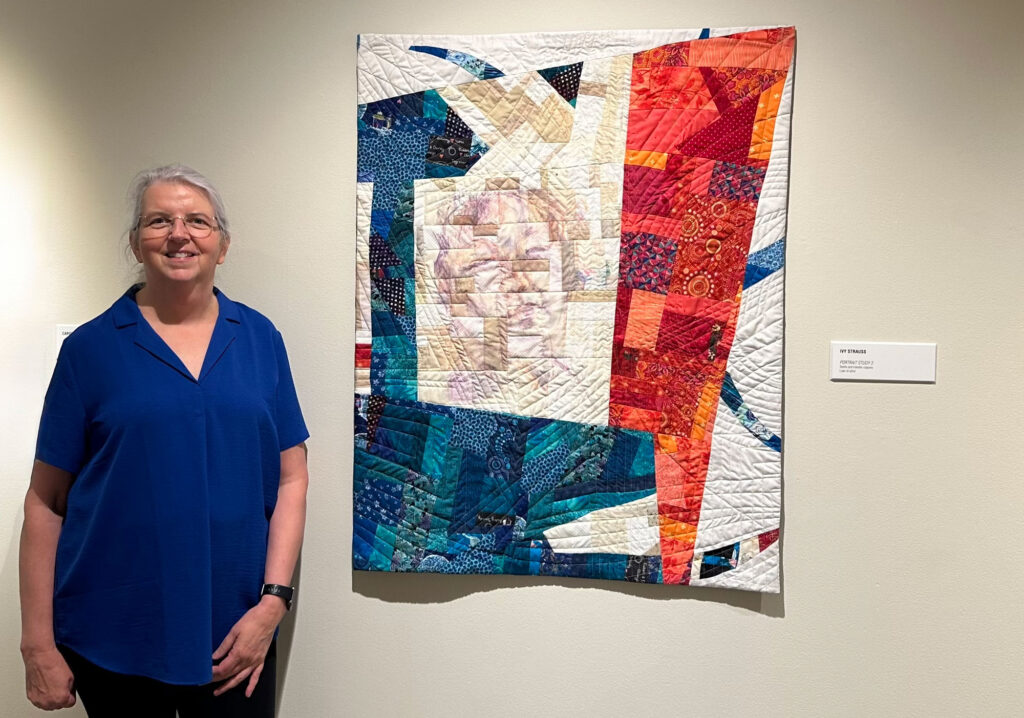
The Burton Family Football Complex
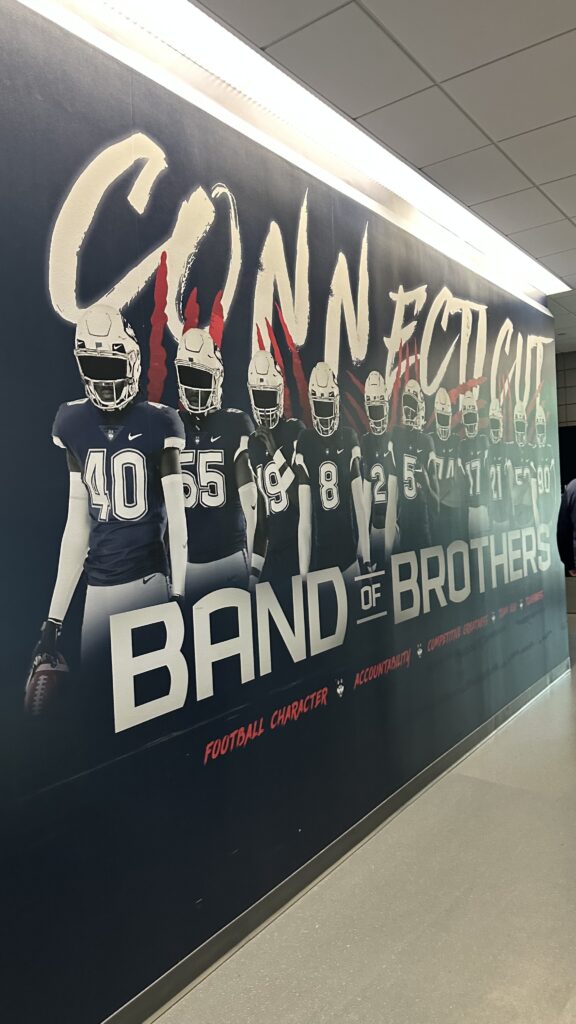
A short walk from the Benton is the Burton Family Football Complex on Jim Calhoun Way.
The $57.9 million facility opened in 2006 after a lead-off $2.5 million donation from Robert R. Burton.
William Peterson, UConn’s assistant athletic director for communica-tions, says during a behind-the-scenes tour that the 105,000-square-foot complex includes coaches’ offices, a sports medicine center, team meeting rooms and student-athlete lounges.
Athletes use the complex to train, learn, dine and practice.
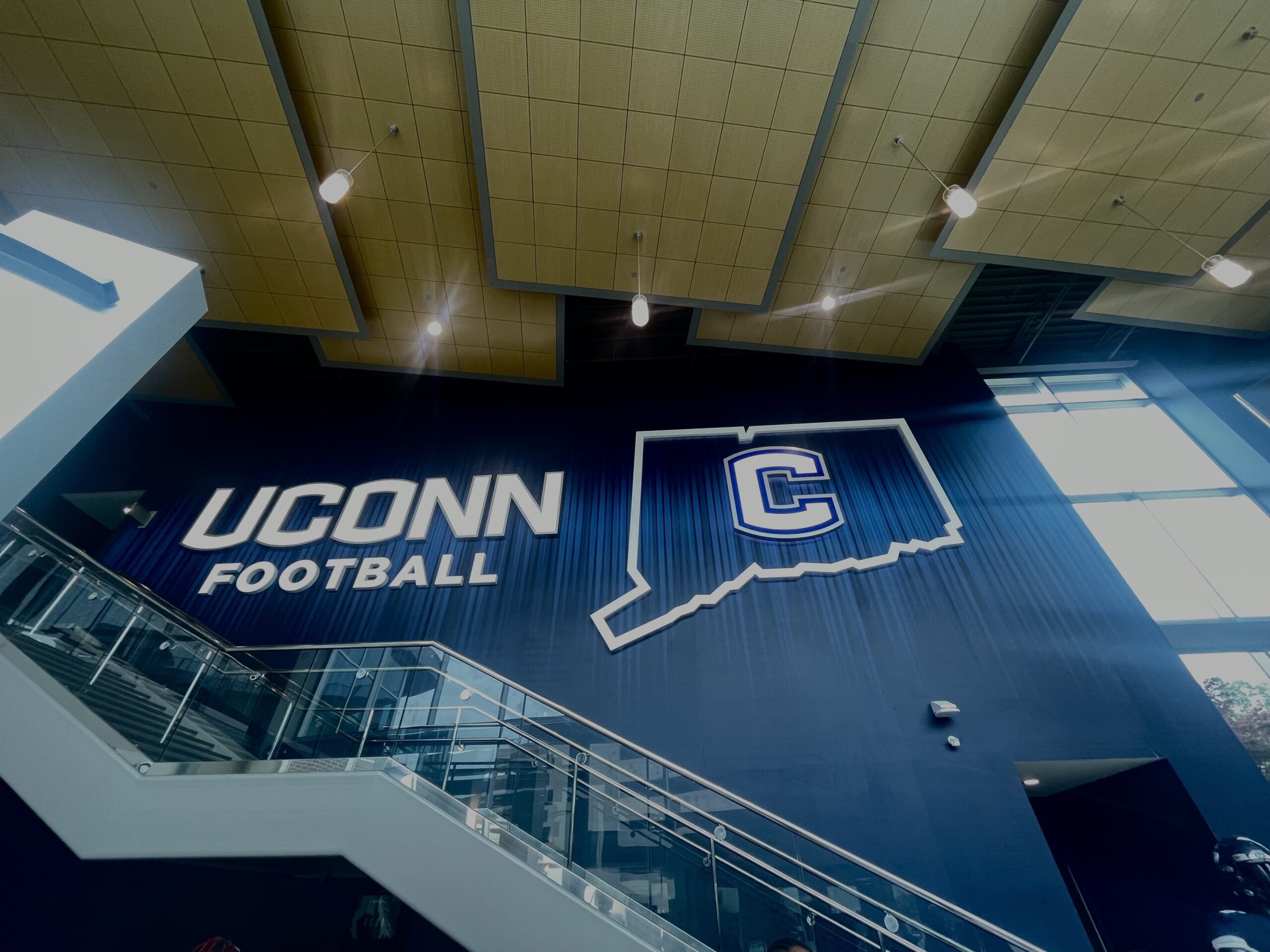
The highlight of the facility is the Mark R. Shenkman Training Center. It includes an indoor temperature controlled turf field used by athletes to simulate game day. With state-of-the-art technology, the UConn Husky Football Team is able to experience crowd cheers, music and marching band symphonies that replicate to a stadium environment.
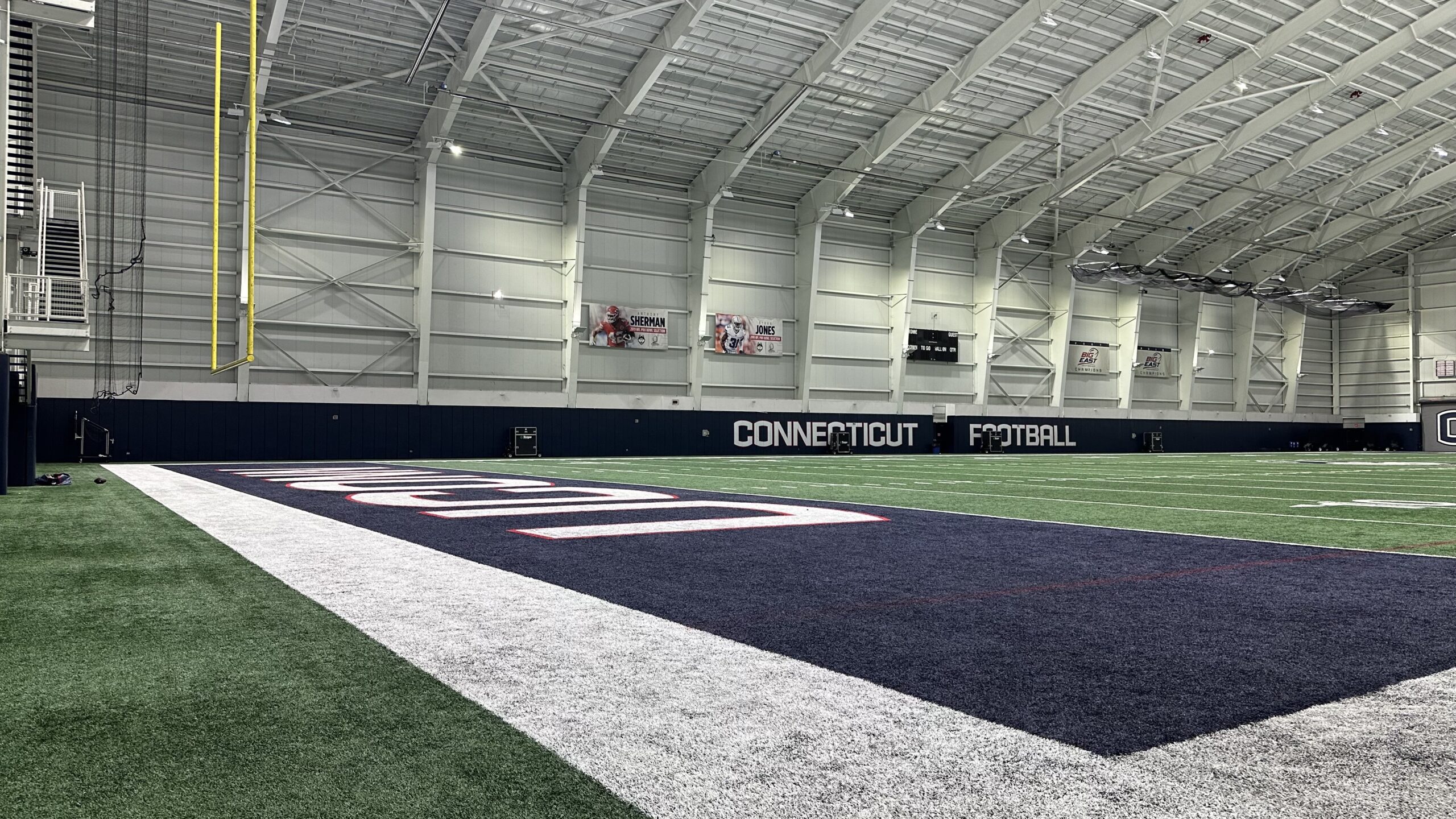
Peterson said technology is key.
“It’s prevalent now in everything — I don’t think that there’s an area it doesn’t touch. Whether we’re talking about sports medicine or equipment …each area of athletics has different components of video department or staff that works with the teams.”
Game play isn’t the only priority in the facility. The Burton Dining Hall provides athletes with nutritional accommodations and structured team meals that work to amplify the teams’ physical and collaborative well-being.
In the clip below, Peterson explains how the university focuses on proper nutrition for its athletes:
Video editing by Michael Butterworth Jr.
“It often simulates a cafeteria experience the way they have a team meal, it’s very specific in terms of how they plan a venue and what different types of proteins and vegetables, working around each (athlete’s) allergies and food aversions,” Peterson says.
The UConn Bookstore
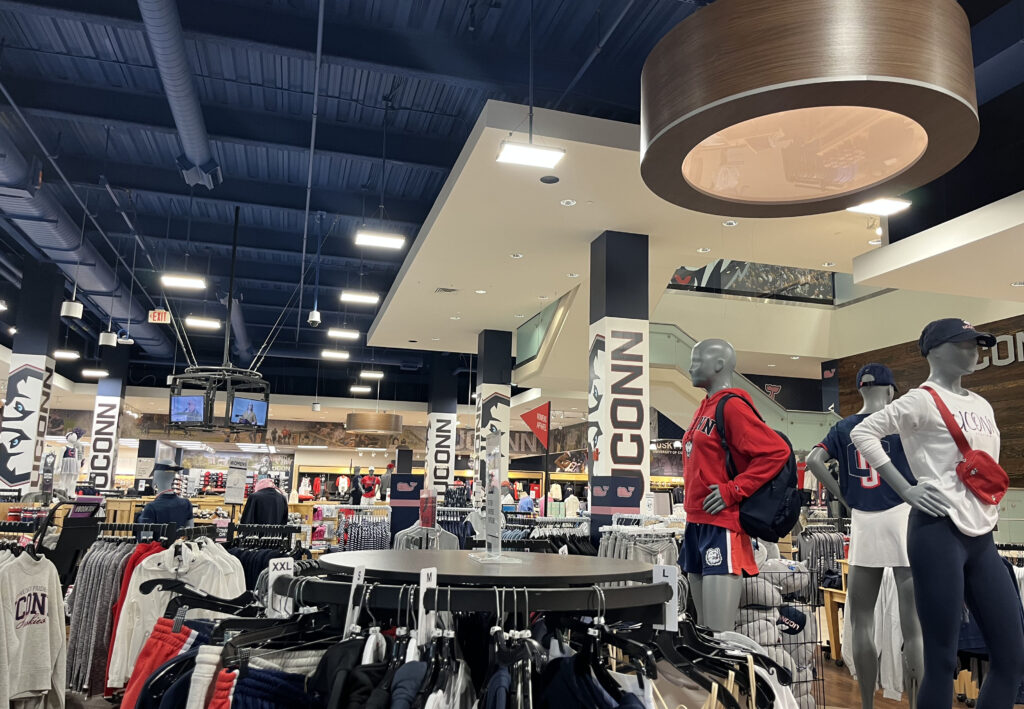
Many end their campus experience at the UConn Bookstore, which has been around since 1975. Now operated by Barnes and Noble, the bookstore is where students can find essentials for the school year, while sports fans can pick up Husky-branded merchandise or get a drink at the Starbucks cafe.
The bookstore is open from 9 a.m. to 6 p.m. during the school year, and until 4 p.m. in the summer.


